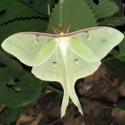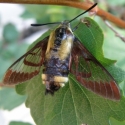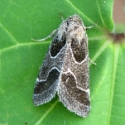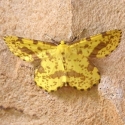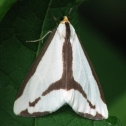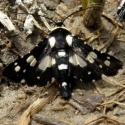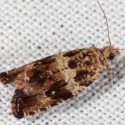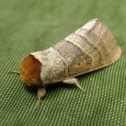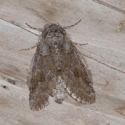
|
|
NATURE SEARCH HOME | INSECTS | MOTHS Don't miss these
MOTHS
Moths and butterflies make up the order Lepidoptera. There are over 10,000 moth species in North America. The lepidoptera differ from all other insects in having scales over most of their wings. Moths and butterflies are separated from each other by wing venation, body structure and habits. Butterflies fly during the day, while most moths are active at night. Butterflies usually hold their wings vertically over the back, while moths fold the wings over the back or wrap them around the body. All butterflies have knobs at the tips of the antennae, while moths lack antennal clubs.
Moths have 3 main body segments - the head, thorax and abdomen - as well as 4 wings. Myriad overlapping scales give the wings their color and patterns. The life cycle of a moth is called complete metamorphosis. After mating, the female lays an egg that hatches into a caterpillar. The caterpillar spends its life feeding on plant material. As it grows it sheds its skin and becomes a new, larger instar. The last molt produces a pupa or cocoon where the caterpillar does not feed, but develops into an adult. When it is fully formed, the cocoon splits open, the adult emerges and pumps fluids into the wings. As soon as the adult is able to fly, courtship begins. The female secretes a pheromone or scent which can attract males up to several miles away. Some species live only 2 to 3 days, while the average lifespan of medium-sized and large moths is about 2 weeks. The large silk moths lack mouth parts so they cannot eat during the adult stage. Many groups of invertebrates are predators of moth caterpillars. There are thousands of species of tachinid flies, braconid, ichneumonid and chalcidoid wasps that are parasitoids of caterpillars. Birds, bats, large insects and spiders are major predators of adult moths. Disclaimer: The content of NatureSearch is provided by dedicated volunteer Naturalists of Fontenelle Nature Association who strive to provide the most accurate information available. Contributors of the images retain their copyrights. The point of contact for this page is: Babs Padelford. |
||||||||||
|
